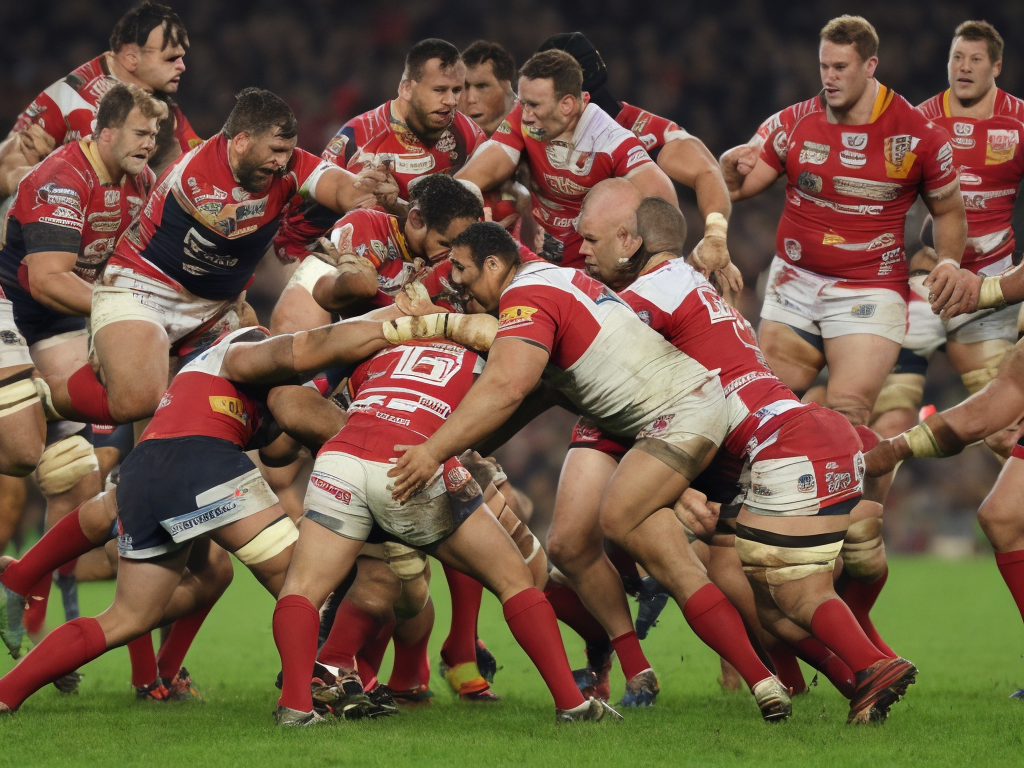
The games of rugby union and rugby league have origins from a single sport—rugby football. However, over time, these two variations of the game have developed their own distinct playing styles, rules, and cultures. For someone new to rugby, the difference between the two can seem subtle, but a player or a fan of both games would tell you that they are starkly different sports. In this article, we explore the differences between rugby union and rugby league.
Origins
In 1871, the Rugby Football Union (RFU) was formed in England to establish rules for the sport of rugby football. The early years witnessed a general approach to the sport with a lack of specialized positions, numerical limits on the field, and no restrictions on tackling. However, in 1895, a group of clubs from the north of England broke away from the RFU and formed the Northern Rugby Football Union (NRFU). These clubs did so primarily due to disagreements with the RFU over compensation to players for missing jobs to play rugby on Saturdays. This event famously became known as the ‘Rugby League schism.’
In response to the formation of the NRFU, the RFU introduced a number of reforms. These reforms included a 15-a-side player limit, the introduction of specialized positions, and restrictions on tackling among others. This variation of rugby football became known as rugby union.
Players and Positions
One of the fundamental differences between rugby union and rugby league is the number of players on the field. Rugby union is played with 15 players on each team, while rugby league is played with only 13 players on each team. The different number of players affects the play styles and strategies used in each game.
In rugby union, there are eight forwards and seven backs. The forwards who make up the scrum are more specialized and heavier in rugby union, while the backs tend to be quicker and lighter. In comparison, rugby league has six forwards and seven backs. The forwards tend to be more versatile in their roles, and the backs get fewer set pieces and tend to use their speed and agility more frequently.
Set Pieces
A significant difference between the two sports is in the set pieces that are used. Rugby union has a range of set pieces such as scrums, lineouts, and rucks, while rugby league only has the scrums. In rugby union, both teams line up against each other, and the ball is put into the scrum, and one team tries to push the other team backward while the scrum-half tries to pass the ball to their backline. The lineout is another set piece, whereby the ball is thrown in by a player from a club’s team at the sideline, where the forwards jump to catch it, and the ball is passed through the backline to an attacking player.
In comparison, rugby league’s scrums are designed to get the ball back in play as quickly as possible. The ball is placed between the two teams, and the players bind together; from there, the ball is rolled to the scrum-half to get play restarted.
Tackling
Tackling is an essential element of rugby, and the way tackles are made differs between rugby union and rugby league. In rugby union, the tackler must bring the player they tackle to the ground immediately. Moreover, the tackled player must release the ball from the ground almost immediately, allowing both teams to push for possession in a ruck.
In rugby league, on the other hand, a player is allowed to instigate a tackle and then back away from the tackled player to help their team in defense. The tackled player is also allowed to stand up and play the ball once again.
Scoring
The ways of scoring are one of the vital differences between rugby union and rugby league. Rugby union offers more variations of scoring opportunities than rugby league. In rugby union, the two primary ways to score are by getting a try (where the ball is touched down in the opponents’ in-goal area) and by kicking the ball through the uprights between the goalposts for a penalty or a conversion.
In comparison, rugby league offers almost the same methods of scoring, excluding the conversion. The methods include a try, a goal kick, in which the ball must be kicked through the posts after a try, and a drop goal, whereby a player can kick the ball through the posts at any time during the game.
Conclusion
While rugby union and rugby league share a few similarities, they have significantly different rules and playing styles. With different numbers of players, varied positions, and diverse playing tips, these two codes of rugby require unique skills and strategies. The differences highlighted above show that despite having a shared heritage, rugby league and rugby union are now two separate sports, with their own distinct rules and cultures.
 Self-Instruct
Self-Instruct